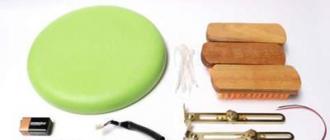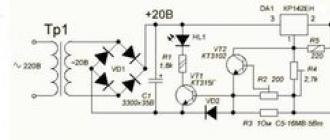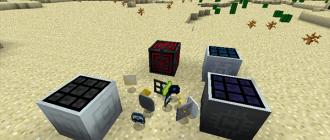Smartphones are not cheap and you probably spent hundreds of dollars to buy one. And the more expensive our device, the more carefully we treat it. After all, in fact, we are investing in a product that can be resold after a certain time, and a “shabby life” phone is unlikely to arouse interest among a potential buyer. Yes, and the owner himself, you will agree, it is much more pleasant to use a device that looks like new for a long time.
There are several ways to protect your phone from unwanted damage. As a rule, these are all kinds of covers and protective films. I would like to dwell on the latter in more detail. Many of you are familiar with them firsthand and even use them today. They are quite cheap and create an additional layer of protection between the screen of the smartphone and the cruel outside world, which is trying in every possible way to destroy it. 
And yet I do not use screen protectors. Why ask you? Well, for several reasons. Firstly, I am very annoyed by the sticker process itself, and I am wildly indignant at the sight of air bubbles and leaked dust particles under the film. Familiar feeling, right? Secondly, I do not like the tactile sensations from the screen protected by a film. Believe me, even the most expensive film can change your experience with the device, not for the better. Any of these, over time, make the display of content on the screen not as crisp and clear as if you were looking at an unprotected display. This comes from the constant interaction of the film with natural and other fats from our fingers. And finally, I just don't feel like I need it. After all, phone manufacturers used specially designed materials for screens, which in most cases are very difficult to scratch. 
Engineers around the world use such a concept as the hardness of a material. To classify materials by hardness, various tests are carried out, based on the ability of certain materials to influence each other, and in our case, with phone screens, to scratch each other. In general, in theory, a harder material cannot be scratched by a softer one. Usually smartphones these days have protective glass and usually it's Gorilla Glass. According to Corning's specification, Gorilla Glass 3 has a hardness of 534 - 649 kgf / mm2. This value can be compared to the hardness of hardened steel and means that objects such as household knives, keys or coins are unlikely to scratch the display. In addition to increased hardness, Gorilla Glass uses a special so-called oleophobic coating that reduces their ability to pick up fingerprints.
Actually there is limited number materials that the phone screen comes into contact with that can scratch it. By adopting a simple strategy for handling your mobile device, you can avoid scratches without resorting to screen protectors.
Here's what I do. In every item of my clothes there is a “designated” pocket in which I carry my phone, and I know for sure that nothing but it will go there. It can be either a pocket of trousers or jeans, or any inner pocket in outerwear.
The most important culprit in the appearance of scratches on the screens of not only smartphones, but also watches, is sand. Sand itself is a product of mechanical weathering of rocky soils, and sand grains, as a rule, consist of the most unweathered particles, mainly quartz, which is used in the manufacture of glass. As they say, I found a scythe on a stone. If you live on the coast or are just on vacation by the sea, then you should get a small plastic container to store your phone when you visit the beach. I agree that the “naked version” of carrying phones is not for everyone. Maybe you are a lifeguard at sea or a builder, and your work activity takes place in an environment of "unfriendly" materials. 
This article was not written to discourage everyone from using mobile security, but just to raise awareness. I see a lot of people around who, almost on a subconscious level, feel a manic need for the screens of their smartphones. Trust me, companies have already spent a lot of time and money researching to make your phone's glass more durable and scratch resistant. And I hope the above information and tips will help you save some money and the hassle of using screen protectors.
What do you think about this? Are you able to do without protective films on the screens of your devices? Tell us in the comments about your strategy for avoiding scratches on displays.
2 years ago





Modern phones are equipped with durable displays. And yet, in order to protect your device, a case is put on the case. Stick on to protect the display protective glass or film. What's better?
Protective film. What it is? Screen film is by no means the most high-tech product. The film is three layers of a special material, of which the top one serves as protection. The middle layer is for absorbing ultraviolet radiation from the phone. The bottom layer is made of silicone - in order to stick to the screen.
Types of protective film
There are 3 main types of films: matte, glossy, mirror. And each of these films has its own properties.
* Glossy film

Many people prefer it when choosing between smartphone glass and film. As a rule, such people value practicality. The protective function is performed effectively here. The device in such an accessory guarantees image quality. There are also disadvantages. Sometimes glossy film has a lot of glare. Scratches quickly appear on it and fingerprints remain.
* Matte film
This film is just as popular. Its main advantage is its ability to absorb glare. It also hides fingerprints. However, it is not uncommon for image degradation to occur because it has an unusual structure.
* Mirror film
Mirror plastic may not always protect the display. And it is able to reflect objects. This means that if the screen is turned off, then it becomes a mirror. Similar to matte film, such an accessory also sometimes distorts the image.
Protective glass

This is a more modern option for screen protection. It is made from tempered glass. Glass is thicker and harder than ordinary film. Therefore, you will not see fingerprints and even scratches on it. Protects from impacts. Doesn't let moisture through. Colors, display brightness and sensitivity are preserved. The glass is thicker (0.25-0.50 mm) because it has several layers.
The first layer is based on silicone, due to which it adheres tightly to the screen. Then a bonding layer, thanks to which the fragments do not crumble when the integrity of the glass is broken. The third layer is anti-reflective. Due to it, in bright light, the visibility of the image is preserved. The protective layer saves from drops, bumps, drops and other damage. And the oleophobic coating protects against moisture, fingerprints.
Treat like a girl
The film is softer than glass, and therefore it lasts less. One has only to touch it with a sharp or hard object, as scratches appear. And the film is no longer suitable, you need to buy a new one. Glass is a completely different matter. The protective layer saves from bumps and falls. Dirt from the display repels the oleophobic coating as soon as you wipe it with a rag. However, this coverage is not permanent. It wears out.

Before cleaning the glass, you need to check its integrity. Pour a little water on its surface. It's okay if she begins to gather in drops. When water spreads, this indicates that the coating is broken. Maybe it doesn't exist at all.
Remember that alcohol solutions, like other cleaning products, are not suitable for cleaning. It is better to use solutions based on water. They are applied to a cotton cloth, and then gently wipe the screen of the device.
The situation can be corrected even after the oleophobic layer disappears. You only need to buy special oleophobic coating kits. The set includes soft material. And also - special rags. They are needed in order to apply and distribute it. The tool dries up before our eyes, and therefore you need to work at a pace. It is advisable to carry out the procedure again the next day.
You will inevitably have to make a choice between these accessories. At the same time, it must be taken into account that the film protection does not need care. But it also does little. So you have to change it often. Glass - of course, the accessory is more durable. However, it will quickly lose its properties if it is used carelessly. Glass requires special care. To many who have mobile device, there is no desire to do this. However, whoever does this can expect the glass to last a year or more.
Draw your own conclusion!

Film or protective glass? What to choose? Determining which is better is not so easy. Opinions on this matter may vary. And we must admit that each of these two contenders for the title of "best" has its pros and cons. So the whole point of choosing is to eventually prioritize without mistakes.
Buying a film will cost less. The film varies in texture. It will last several months if treated with care. Alas, the film will not be able to protect against serious damage. To stick the film on your own is not so easy.
The glass has an impact-resistant layer, a grease-repellent coating. It can last approximately 2 years. Installation leaves only pleasant impressions. True, the oleophobic coating must be constantly looked after. Glass costs much more than film.
Have you ever smashed your smartphone display? According to Motorola research, every second gadget owner would answer this question in the affirmative. Moreover, 23% of users continue to use their smartphones, despite the fragments cutting their fingers. broken screen. At the same time, 42% of smart phone owners refuse to repair due to the prohibitively high cost of replacing the display. And it’s not justified, because in addition to the glass itself, it can also break Touchpad"touchscreen", and the matrix itself, and even a cable for connecting the matrix and touch-grid.
How often do phones break? 50% of smartphone owners complained about accidental slipping out of their hands, 32% - about falling out of their pocket, 27% - about falling off the gadget from their knees when standing up. And 5% even managed to smash a smartphone by throwing it against a wall. Why are we talking about this? And besides, despite the latest developments of engineers and the hyped hit novelties of companies, there are no unbreakable displays.
Scary? Not much if you treat your gadget with care and know how to protect it. And one of these "fuses" are protective glasses that are popular today. They differ from the usual protective films in thickness, layering, materials of manufacture and, most importantly, the function of protecting the screen from cracks and chips. Of course, no one can guarantee a 100% protective effect when using protective glasses, but still, the probability of protecting the display with them increases significantly. Moreover, in addition to protection, they perform a number of useful features. Just look at what layers such glass consists of.
1. Silicone base. Silicone allows the glass to almost firmly stick to the screen, so that it does not move to the side.
2. Retaining layer. It starts working when the damage is severe enough to break through all the protective layers of the pasted glass. Thanks to him, the smartphone display glass will not crumble, and the crack will not go further.
3. Anti-reflective layer. It is responsible for maintaining image clarity under bright sunbeams or in a well-lit room.
4. Protective layer. This is the main defense, which takes all the blow. This layer is responsible for preventing scuffs, chips and scratches from appearing on the display.
5. Oleophobic layer. With it, sticky stains of grease and moisture, familiar to every display, will not remain on the glass.

What is the difference between protective glasses for smartphones
Smartphone model
If other parameters affect the level of glass protection and ease of use, then this is the first and most main characteristic, not paying attention to which, you will throw money away. All protective glasses are made under certain models smartphones. Of course, there are many Chinese glasses that fit the screen diagonal, but they may not suit you. The first option - the glass will be smaller or more display your smartphone. The second - glass is suitable, but cuts under front camera, buttons, speaker or front sensor may not be. In this case, it remains only to throw away the glass: after all, it is absolutely impossible to cut it - in this way you will break its structure and, consequently, its strength.Glass thickness

This is the first of two characteristics responsible for the reliability of the protective glass. The thickness of most materials affects their strength - and so with glass: the thicker it is, the stronger it is. But do not forget that thick glass visually enlarges the smartphone, it becomes uncomfortable. Moreover, it has been noticed that some thick glasses lead to a decrease in the sensitivity of the sensor. Therefore, it is best to stick to the “golden mean” in this matter. Modern glasses are from 0.15 to 1 mm thick. If you are not going to be backpacking with a phone in your pocket, then it is better to choose a thickness from 0.28 to 0.5 mm.
Glass strength

The strength of glass is measured on the Mohs scale, which measures the ability of a surface to resist scratches, cracks, and chips. To create the gradation, ten natural minerals were used, which scratched each other and lined up in the Mohs ruler. But do not forget about the features of the shape of the protective glass: it is thin and rectangular. In this regard, when a damaging surface hits the front part, the most durable glass will perform its function better, but when it falls on the end, only the less durable and, therefore, more elastic glass will be able to absorb the impact. Therefore, it is best to choose the optimal middle option - 9H.
Coating type

In addition to protecting against damage, protective glasses have other functions. There are several types of glass coatings: glossy, matte, oleophobic, ultra-clear and private.
Glossy glass is the standard option and does not have any additional features. Such glass most accurately transmits the image, retains the brightness of the backlight, is almost invisible on a smartphone.
The frosted glass helps to cope with the bright light falling on the display - the picture does not fade and retains colors. This is especially true in bright sunlight or in a bright room. But the disadvantage of such glass was a slight distortion of the image.
Oleophobic coating is now the standard for most manufacturers. Most often, its presence is not even indicated on the packaging. However, not all models have it. And it is necessary to prevent moisture and grease from getting on the glass.
Ultra-clear glass speaks for itself: it is not visible on a smartphone.
Private glass will appeal to those who do not want others to see the smartphone screen. Its feature is the dimming of the screen at an oblique angle. That is, you can see the image only by holding the device straight in front of you. This option is perfect for those who often ride the subway or view personal data.
Glass type

To give glass an aesthetic appeal, engineers have come up with several types of processing of sharp glass edges: 2D, 2.5D and 3D.
Sharp edges are removed from the edges of 2D glass without careful grinding of the edges, as they are recessed deep into the body or covered with a side edging. Thus, the user does not see the thickness of the glass: only the front surface of the coating is open in front of him.
I will say right away - gluing protective films on the screen always seemed to me a stupid thing. Well, really, like a remote control in a bag. The people who did this were usually guided by two reasons. Firstly, in order not to catch scratches on the screen and subsequently sell the phone at a higher price in excellent condition. Second, to get some additional options. For example, anti-reflective films are available. Or matte, with protection from peeping neighbors in transport.
There is another category of people who get devices already with a pasted film, and they simply do not remove it. I had a friend who stubbornly did not remove the film with the inscription “Please, remove the protective film” from her smartphone. Some manufacturers of the second echelons of the film (protective, not shipping) are glued to the screens of their devices at the factory by default. This is true for budget smartphones and tablets, the screen of which has plastic rather than glass protection.
But enough about films. I became interested in their alternative in the form of protective glasses a year ago, when I broke the glass on an iPhone (then still 5S). After the replacement, the phone was poorly assembled, and the new screen turned out to be of poorer quality. So my new "six" received a protective glass immediately, you never know what. And then I ordered a few more different glasses to compare them.
So, what are the advantages of protective glass (as opposed to film):
- Most likely it will save the original glass of the screen in case of an unsuccessful fall (I confirm - I had hands-hooks and had experience).
- Glass is much easier to stick than a film, under which any speck of dust bubbles.
- Glass is more pleasant to the touch, it has a good oleophobic coating, scratch protection.
- The glass is stronger and more secure, it cannot be accidentally peeled off, for example, by putting the phone in a narrow pocket.
There are no cons, in my opinion. But there are features. The glass is thicker than a film, but personally I don’t feel it in any way. It cannot noticeably thicken or make the phone heavier. And if you have a smartphone / tablet of some very rare model, then you may not find a suitable glass for it. And you can’t cut it like a film.
What are glasses?
Protective glass is a simple thing, like five kopecks, but it has its own characteristics. First, the thickness. Usually 0.3 mm, but 0.26 mm are also found. I don't see any difference between these options. In addition, the expression "2.5D" is often found in the description. This means that the edges of the glass are slightly rounded, it is more pleasant to touch them.

There are also "3D" glasses, they are designed for currently popular phones with rounded screen edges. For example, samsung galaxy S6 Egde and iPhone 6/6S. True, technically we are most often not talking about solid curved glass, they are very fragile and difficult to manufacture. Producers get out of hand different ways. The most "condo" is when the glass is the size of a phone screen, but not rounded. In this case, dirt and dust are clogged under it. A more elegant solution is when curved metal sides are attached to ordinary glass (and to keep it all there is a protective film on top). It looks good, although - for an amateur. I found the metal edges to be sharp.


On the this moment my favorite is glass with carbon fiber frames. Looks like the original iPhone panel. But it is relatively expensive (do not take cheap analogues, they look bad).

Come across protective panels with different colors screen borders - a way to refresh appearance phone.


Of course, there are regular screen protectors for phones with curved screens. They close the front panel to the bend, that is, part of the glass still remains unprotected. It looks good in principle, but it is not very convenient when using gestures, when you need to move your finger from the very edge of the screen. It turns out some obstacle, even if it is “2.5D”.

There are glasses with screen protection from prying eyes. There are "2 in 1" options when protective glasses are offered for both the front and rear panels.
The strength level for all glass sold is declared as 9H and clearly illustrated. In my experience, glasses still actively “catch” scratches, but this is not evident.

Protective glasses for smartphones are especially popular, but there are a lot of them for tablets as well.
Where to buy
The easiest way, in my opinion, is to order from eBay or Aliexpress. I don’t chase brands, a penny “noname” of quite decent quality, in branded packaging, complete with screen cleaning accessories. In our stores they sell the same thing, but with an extra charge. The main thing is to choose an experienced seller and read the reviews (there are a lot of them on Ali in Russian, many with photos).
The simplest protective glasses cost from 1-3 dollars, tricky ones for curved screens are more expensive. Shipping is usually free.
How to glue
Again, sticking glass is easier than film. It miraculously hides even small dust particles that would turn into bubbles under the film. The kit usually comes with wet and dry wipes, as well as dust removal stickers. Connoisseurs recommend gluing glass in the bathroom with the shower turned on. So that there is high humidity and all the dust is “nailed”. But I did well without it.

The main thing is to attach the glass so that it does not “mow” in one direction or another. This is important, because it has "eyes" for the camera and sensors. If the first time did not work out exactly, the glass can be carefully peeled off and try again. Again, a plus - the film will not survive this. If large dust particles nevertheless got under the glass, they can be removed with Velcro from the kit or with a piece of adhesive tape, carefully lifting the glass. That's all science.
For absent-minded girls like me who periodically drop their phone, protective glass is a find and salvation. And even if you have never dropped the phone, think about it, maybe you should protect yourself? It's a shame when, because of one awkward movement, you have to pay a lot of money for replacing the screen.
The protective glass is several times harder than the most durable film, and therefore saves the device not only from. According to the manufacturers, it is able to withstand even a blow with a hammer. We do not recommend such experiments. But we can say: in the event of a fall, it is most likely that the protective glass will break, and not the screen of the device.
In this case, the glass does not affect the sensitivity of the sensor and the brightness of the image.
iphones.ru
However, glass is more expensive than film. And you can pick it up only for relatively popular models of smartphones and tablets.
How to stick protective glass
Step 1. Prepare the room
If dust gets under the protective glass, you will have to live with bubbles on the gadget's screen or tinker with removing them. To avoid this, do a wet cleaning in the room, or at least:
- Ventilate the room.
- With a clean cloth, preferably with detergent, wipe the table on which you are going to glue the protective glass.
- Wash your hands.
Step 2. Prepare the tools
In addition to the device and protective glass, you will need:
- Display cleaner, antistatic agent, or plain alcohol.
- Microfiber cloth.
- Stationery tape.
- Scissors.
- Plastic card or scraper.
Step 3: Degrease the screen surface
To do this, use a display cleaner, antistatic agent, or alcohol. Carefully remove all stains. If you've just removed the old one from your phone, wipe off any remaining glue. Wipe the screen dry with microfiber.
 geek-nose.com
geek-nose.com Step 4. Stick the glass
Take protective glass. On the one hand, it is covered with a film, it must be removed. Now the glass must be held at the edges so as not to leave fingerprints on the surface.
 geek-nose.com
geek-nose.com Carefully, without touching the screen, place the glass 5–10 mm from the smartphone. Align the glass so that the speakers and buttons are under their respective holes.
 geek-nose.com
geek-nose.com The most exciting moment has come. When the glass is perfectly aligned on the edges, simply lower it onto the screen. Thanks to the adhesive inner coating, it will fix itself.
 geek-nose.com
geek-nose.com If any bubbles appear, remove them with a microfiber cloth. Wipe the screen with it from the center to the edges, expelling excess air.
Step 5: Remove Missing Motes
Perhaps some speck of dust still got under the glass and left an additional bubble on the screen. Unfortunately, microfiber will not remove it. You will have to re-raise the protective coating.
This can be done with a plastic card or a scraper. In addition, we need a strip of stationery tape. It is better to take a transparent adhesive tape: white construction tape or colored varieties will leave marks on.
Pick up the edge of the glass, lift it up so that you can get a speck of dust. Now stick a piece of tape on it and sharply tear it off along with the garbage. Everything. It remains only to return the protective glass to its place.






